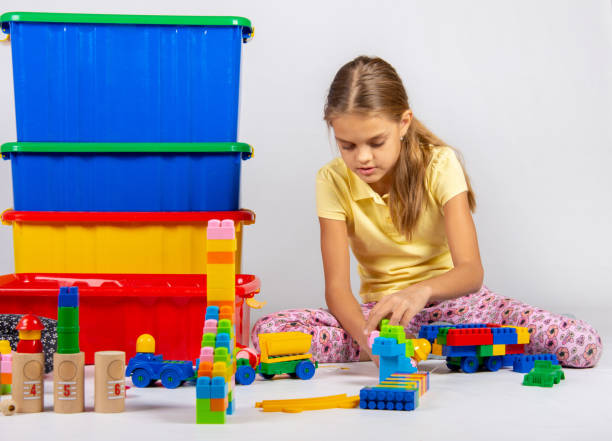Every year, hospital emergency rooms treat many children for injuries caused by toys. So many toys are available, and more are coming out daily. Your child must be playing with safe toys.
Most manufacturers follow age-specific guidelines when labeling new toys. The most important thing parents can do, especially for younger children of school age, is supervise their play.
What to Look For
Toys are closely monitored and regulated by the U.S. Consumer Product Safety Commission. Toys made or imported in the United States since 1995 must meet CPSC standards.
When shopping for toys, here are some guidelines that you should keep in mind:
- Fabric toys should be marked as flame-retardant or flame resistant.
- Washable toys are recommended for stuffed animals.
- Lead-free paint should be used to cover painted toys.
- Nontoxic art materials should be marked on the fabric.
- The package of crayons and paints will say ASTM D-4236, which means the American Society has tested them for Testing and Materials.
Avoid older toys, including those you may have received from family and friends. They may not meet the current safety standards.
Make sure the toy you choose is quiet for your kid. Some electronic toys are as loud as car horns and even louder when held directly in front of the child’s ears. This can cause hearing damage.
You can also find out more about the following:
Please read the labels of toys to ensure that they are appropriate for your child’s age. You can make informed decisions using guidelines published by groups like the CPSC.
Consider your child’s personality, habits, and behavior when you purchase a new toy. Even if a child seems more advanced than other children of the same age, they shouldn’t play with toys designed for older children. However, the age ranges for toys are determined not by intelligence or maturity but rather by safety considerations.
When choosing toys for children of school age, here are some guidelines:
- Only use bicycles, scooters, or skateboards with a helmet that meets current safety standards. Also, wear other safety gear like wrist, hand, and shin protectors. On the label, look for CPSC certification or Snell certification.
- The nets must be made well and attached firmly to the rim so they do not become a strangulation hazard.
- Soft tips or suction cup ends are preferred over hard points on toy darts and arrows.
- Toy guns must be brightly colored so they can’t be mistaken as natural weapons. Children should also be taught not to point guns, darts, or arrows at anyone.
- Giving BB guns or Pellet rifles to children under 16 is inappropriate.
- Underwriters Laboratories has set safety standards for electric toys.
Keep Toys Safe in the Home
- Teach your children to put away their toys and take care of them.
- Check toys frequently to ensure that they’re not broken or unusable. For example, check for rust, sharp edges, or frayed wires in electronics and bikes.
- Repair or throw away damaged toys immediately.
- When not in use, store outdoor toys so they are not exposed to snow or rain.
- Read the manufacturer’s instructions to keep your child’s toy in top condition.
- Children of this age can be tempted by things that are not toys, like fireworks, matches, and tools. These items should be kept out of the reach of children.

